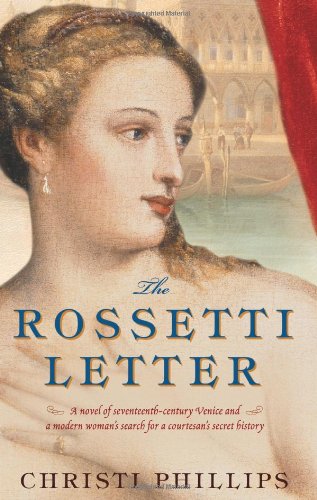The Rossetti Letter
Contemporary Harvard grad student Claire Donovan and Venetian courtesan Alessandra Rossetti are heroines of parallel tales told in alternating chapters. The stunning beauty Rossetti is a rising star in the demimonde of Venice in 1617, caught up against her will in a dangerous conspiracy threatening the city. One of her lovers, the Marquis of Bedmar, the Spanish ambassador, is intriguing with the Spanish viceroy of Naples to invade Venice and add the city to Spain’s vast empire. Will she betray Bedmar to save the city, and risk his death as well as her own? Yes, as the prologue tells us.
With the fictional Rossetti, Phillips uses artistic license to imagine the lives and loves of Bedmar and the people around him. She creates her own version of the murky historical story of the Spanish Conspiracy of 1618. The Rossetti Letter is a denunciation of Bedmar supposedly written by the brave courtesan. In the contemporary chapters, Donovan discusses arguments about whether the Conspiracy was really a Spanish plot or an expedient creation of the Venetian Council of Ten. According to the author’s note, this question is still in doubt. Meanwhile, our modern heroine pursues the mysterious details of Rossetti’s life, crucial to her dissertation, on a brief trip to Venice. Her work is threatened by a handsome Cambridge professor researching at the same library and trying to prove the letter a fake.
Phillips’s use of short chapters and frequent shifts between 1617 and the present set a fast pace, but the time shifts are distracting. Donovan’s modern story, often interrupted by historical asides, seems contrived and is less interesting than the romantic suspense of Rossetti’s life as a courtesan and unwilling spy. Phillips lavishes her best prose on Venice itself, enthralling to visitors and natives alike.










